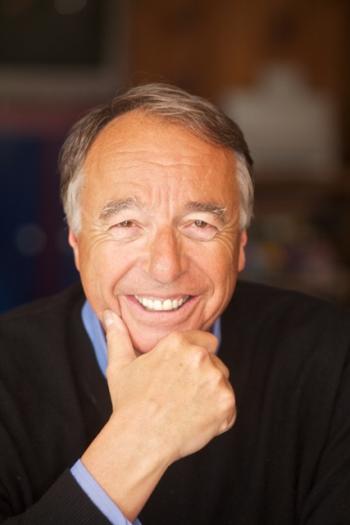A strange symmetry
I experienced an unexpectedly strong emotional response to a Bob Mitchell photo published recently in the Boothbay Register. Perhaps you remember it: a shot of the headstone marking the final resting place of legendary journalist Charles Kuralt.
Nearly two decades have passed since that memorable August afternoon in 1993 when I had my first encounter with Charles. When the phone rang in my office in Bath and I was told that Charles Kuralt was on the line, I was naturally skeptical. But his voice was unmistakable and by the time I hung up, we’d made plans for a visit the following week.
In deference to the inevitable Maine summer road construction limiting access to my office, I suggested that we meet at the nearby Patten Free Library. I was crossing the rolling lawn, past the lily pond with its William Zorach fountain, when I caught sight of Charles examining the library’s recently refurbished gazebo.
We’d barely shaken hands before he began peppering me with questions.
“How old is it?”
“Is this the original design?”
“Who was the architect?”
Thus was I introduced to one of Kuralt’s signature traits, an unfeigned and boundless natural curiosity, which drove him to discover and share countless stories hiding in plain sight along the highways, byways and back roads of America.
That first meeting led to an audition. Somehow I made the grade, and in October of 1993 I began what was to become a wonderful 11-year run as a regular contributor to CBS News “Sunday Morning.”
Now officially colleagues, I soon became acquainted with another of Charles’ personality traits. He was incredibly hard to track down; the original “Don’t call me, I’ll call you” guy. The upside of which was, now and then, he actually did call me.
Already a fan of “Sunday Morning,” I knew the show was broadcast live from the studio in New York. So you can imagine my delight the first time Charles phoned me just as the end credits were rolling with his compliments on that week’s postcard.
Over the next year or so we saw each other infrequently, mostly when I was in The City for production meetings. Unfailingly cordial, but usually running a few minutes late, he was often disheveled and out of breath (chain smoking Pall Malls as he did so enthusiastically will have that effect). Charles was a small man with a large man’s magnetism and charm.
A year or so later Charles retired, passing the “Sunday Morning” baton to the marvelously capable Charles Osgood.
Charles continued to maintain an office at CBS. But good luck catching him behind a desk. He still phoned occasionally. But I was busy and he was busy and the days turned swiftly into years.
I hadn’t heard from Charles in several months when I found myself walking across the very same patch of library lawn in Bath, past the same ornate fountain looking more or less in the same direction I’d been looking when I’d first clapped eyes on him nearly four year earlier. Suddenly, I heard a voice say, “I’m so sorry to hear about your friend.”
It was July 4, 1997. I’d been wandering around the annual craft fair on the library lawn when I heard the news. Within minutes I was on the phone with my cameraman Isadore Bleckman. “Izzy” had spent more than 20 years traveling with Kuralt, filming the “On the Road” TV series.
He called from an airport somewhere en route to his home in Chicago and instructed me to meet him two days later at a certain Doubletree hotel in Chapel Hill, N.C. He’d already made our reservations.
So that’s how I came to be in attendance at Charles’ interment ceremony in the Old University Cemetery. Standing among friends, family members and famous colleagues, Izzy and I listened as the U.N.C. president gave a moving and heartfelt eulogy, including a last minute plot twist absolutely worthy of America’s Master Storyteller himself.
Halfway through his remarks, the eulogist produced a handwritten letter, postmarked New York City, July 3, 1993 – one day before his death – in which Charles requested a burial plot in the very cemetery where we were currently standing.
It was a very strange moment, even a little spooky, and I was struck by the strange symmetry I sensed resonating through this most extraordinary life.
As his mortal remains were lowered into the earth, the oddly theatrical arc of Kuralt’s own Great American Story became evident, right up to and including the strange dramatic foreshadowing of his own final “sign off,” as he left us for the very last time on, you guessed it, the 4th of July.





























